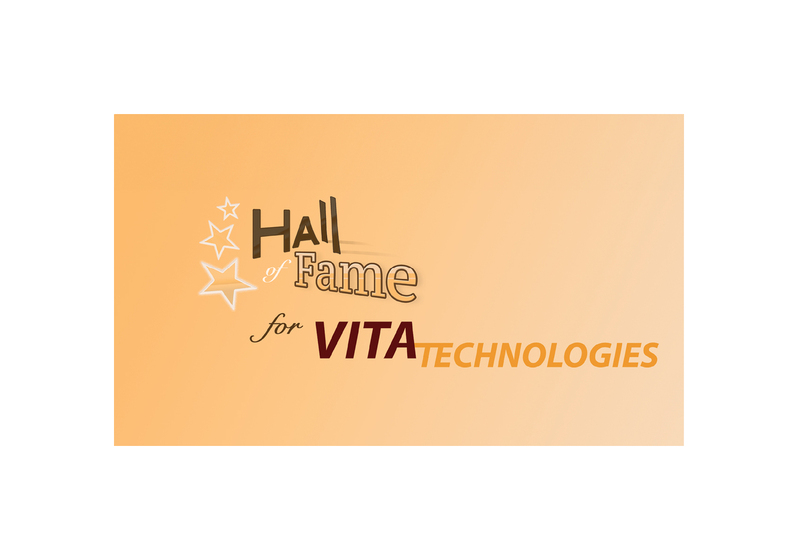The VITA Radio Transport (VRT) standard, also known as VITA 49, is an information-exchange standard defining a signal/spectrum protocol that expresses spectrum observation, spectrum operations, and capabilities of RF devices to promote interoperability between radio frequency (RF) systems and related equipment. This is done independent of manufacturer, equipment type, point of use in an architecture and application. The intent of the VRT protocol is to enable RF systems to migrate from proprietary stovepipe architectures to interoperable multifunction architectures. The application space is applicable to spectrum monitoring, communications, electronic warfare (EW), and radar to name a few.
MOSA and interoperability – benefits of VITA 49
The VRT protocol enables architectures to achieve the objectives of the Modular Open Systems Approach (MOSA). Specifically, VRT enables:
- Simpler and faster integration of products from multiple sources.
- Integration of new components and capabilities with minimal impact on the intrinsic architecture.
- Elimination of dependency upon a single supplier.
- Incremental improvements without redesign of large portions of the system.
- Adaptation to evolving requirements and threats.
- Leveraging of commercial investments in new technologies into architectures that were previously stovepiped.
- Reduction of life cycle risk.
- Lower upgrade cost over the entire life cycle.
Interoperability
The VRT protocol enables message interoperability between equipment from multiple vendors. Full interoperability also requires that the underlying layers such as the physical-link layer are also matched between equipment. VRT is designed to be independent of these underlying layers; therefore, it may be utilized over common protocols such as Transmission Control Protocol (TCP), User Datagram Protocol (UDP), Serial RapidIO, Xilinx Aurora, Race++, Serial Front Panel Data Port (sFPDP), PCI Express, Gigabit Ethernet, and others. Equipment that emits VRT-compliant streams is always accompanied by supplementary documentation specifying which VRT features are used in the corresponding packet streams. This documentation can be used to access the level of interoperability between equipment or systems. (Figure 1.)
|
|
Some of the interoperability benefits of VITA 49 as an information exchange standard include the following:
- Common language to express between diverse equipment providers, reducing integration time and effort. Equipment from multiple vendors can be combined so that technology insertion is simplified. Interoperability is accomplished by:
1. Standardization of signal data transport between receivers, exciters, signal processors, control functions, and information storage.
2. Standardization of metadata transport between transceivers and signal processors. Standard metadata that may be conveyed include sensor settings, geolocation, and a variety of equipment settings pertinent to signal-processing applications.
3. Standardization of control functions – turning contextual metadata into device settings.
- Efficient packet structures for a wide variety of signal data, related contextual and control information.
- Multiplexing of many signal channels onto one link interface.
- Scalability from a single transceiver channel to many transceiver channels.
- Flexible architectures, enabling the routing of data to any number of signal processors or FPGAs [field-programmable gate arrays] in the same chassis, between multiple chassis, or to any destination without degradation of the signal.
- Coherency between multiple transceiver channels for both real-time and recorded-data applications.
- High-precision timestamping for:
1. Correlating sensor data to external events.
2. Synchronizing information from multiple sources.
3. Data recording applications where the information is analyzed in non-real time.
4. Precision geolocation applications such as direction-finding (DF), beamforming, and time difference of arrival (TDOA).
VITA 49 framework vs. architecture
The VITA 49 standard is not intended to be used as a specification from which equipment can be directly built upon and vetted as interoperable with other equipment. It is referred to as a framework from which specifications can be derived. VITA 49 provides millions of options for data types and packet structures that are likely impossible to implement as one application program interface (API) without culling down to required attributes. It is expected that a governing body specify the application requirements, from which a select set of the features of VITA 49 is chosen. This organization would then create an architecture document that references the regulations in VITA 49 and how they should be used. This document may also have other architecture attributes such as physical bus and transport type. The ANSI/VITA 49.A-2015 Spectrum Interoperability standard is such an example applicable to spectrum-survey applications that leverages VITA 49 as a framework. It specifies a reduced set of VITA 49 signal data types and context fields and specifies physical interfaces as Gigabit Ethernet and transports such as UDP and TCP/Internet Protocol (IP). (Figure 2.)
|
|
Applications of VRT
The VRT protocol can be used as an interface at many places in system architectures. For instance, it can be used to convey information between:
- Integrated circuits on the same board.
- Modules/boards in the same chassis.
- Chassis in the same location or platforms.
- Platforms in a network-centric application.
- System of systems.
- Operational regions.
Example applications for VITA 49
VITA 49 was created by, and is being used by, a wide industry base of organizations including RF equipment manufacturers, digital signal processor manufacturers, data recorder manufacturers, prime contractors, and government agencies. VITA 49 is designed into several interesting programs and other standards initiatives. The following are a taste of what VITA 49 can achieve.
CMOSS
One of the early adopters of VITA 49 was the C4ISR/EW [Command, Control, Communications, Computers, Intelligence, Surveillance and Reconnaissance/Electronic Warfare (EW)] Modular Open Suite of Standards (CMOSS) program out of the U.S. Army C5ISR Center. CMOSS consists of a suite of layered standards that are individually useful and can be combined to form a holistic converged architecture.
The goals for CMOSS are to:
- Provide pooled RF resources (e.g., antennas and amplifiers) for communications, EW, and signals intelligence systems.
- Share processing resources (e.g., computers and displays) and data services (e.g., position, navigation, and timing) to reduce size, weight, and power (SWaP) requirements.
- Facilitate rapid insertion of new capabilities into systems.
The functional decomposition portion of the CMOSS architecture allows for sharing of RF resources such as antennas and amplifiers, defines interfaces between RF functions and components, and enables rapid component upgrades. To achieve that, the Modular Open RF Architecture (MORA) was defined: MORA integrates VICTORY and VITA Radio Transport (VITA 49.2) to standardize access and control of the RF chain across the platform.
This work is also part of a collaboration between the Army, Air Force, and Navy under the SOSA Consortium to develop a universal open architecture that leverages existing standards, maximizes economies of scale, and provides the flexibility to rapidly insert the latest capabilities.
AXIe Consortium Optical Data Interface (ODI)
The AXIe Consortium developed a specification – Optical Data Interface (ODI) – with support for speeds up to 80 GBytes/sec, suitable for high-speed instrumentation systems addressing challenging applications in 5G, military/aerospace, and advanced communication research. ODI breaks speed and distance barriers by relying on optical communication over a simple pluggable optical cable.
Though managed by the AXIe Consortium, ODI is not specific to AXIe, and works equally well with any product format, whether AXIe, PXI, LXI, VPX, or a traditional bench instrument design. Standard ODI ports on devices enable communication between instruments, processors, storage, and embedded devices.
Chris Miller, chairman of the AXIe Consortium and strategic planning manager at Keysight Technologies, said, “The ODI specification delivers data communication speeds simply not possible using electrical interconnects. Since it uses a small optical connector that can be placed on any instrument, it is not specific to the AXIe modular standard. To benefit both industry and users, we have decided to open it up to any vendor building products, regardless of form factor, and not restrict it to AXIe.”
The ODI standard leverages three layers of technology. The physical layer is defined as optical technology consisting of 12 lanes of 14.1 Gb/sec each, enabling 20 GBytes/sec per optical port. Multimode fiber cables connect ports together, using the standard MPO [Multifiber Push On] connector. Ports may be aggregated, with four ports delivering 80 GBytes/sec. The protocol layer is defined by the Interlaken standard, a device-interconnect standard common in data centers originally conceived by Cortina Systems and Cisco Systems. Interlaken is supported by the major FPGA suppliers and delivers arbitrary packets over any number of lanes. The top layer specifies packets defined by the VITA 49 VRT family of standards; VRT packets are sent between devices using standardized data formats and context packets.
Amazon Web Services (AWS) ground stations
There are currently thousands of satellites orbiting the Earth, including all kinds of small satellites such as CubeSats, PocketQubes, and SunCubes designed by high school and college students who fabricate and contract launch. Organizations of any size now can relatively easily arrange a launch of these small satellites for Earth observation, communication, media distribution, and so forth.
While it is now relatively cheap to get a satellite into low Earth orbit (LEO) or medium Earth orbit (MEO) and only slightly more expensive to achieve a more distant geostationary orbit, getting that data back to Earth is still more difficult than it should be. Large-scale satellite operators often build and run their own ground stations, which can often cost $1 million or more; smaller operators enter into inflexible long-term contracts to make use of existing ground stations.
One alternative is AWS Ground Station, a fully managed service that enables customers to easily command, control, and downlink data from satellites. Users can schedule access to AWS Ground Station antennas on a per-minute basis and pay only for the time used. When using AWS Ground Station, the user ingests data from the satellite, monitors the satellite health and status, and transmits commands to change the satellite’s operations. Incoming data is streamed to an Amazon Elastic Compute Cloud (Amazon EC2) web service instance where it can then be stored or processed using other AWS services. AWS Ground Station is a fully managed service – there’s no need to build or maintain antennas, enabling the user to avoid fussing with satellites and instead letting them focus on work or research.
There are currently six stations in place and online, with six more in the works. Each ground station is associated with a particular AWS region. The raw analog data from the satellite is processed by a modem digitizer into a VITA 49 RF over IP data streams and routed to an EC2 instance that is responsible for doing the signal processing to turn it into a byte stream. The hourly rates make AWS a very affordable option for school and similar projects.
The VITA 49 suite of standards is available for purchase at the VITA Online Store at https://www.vita.com/.









